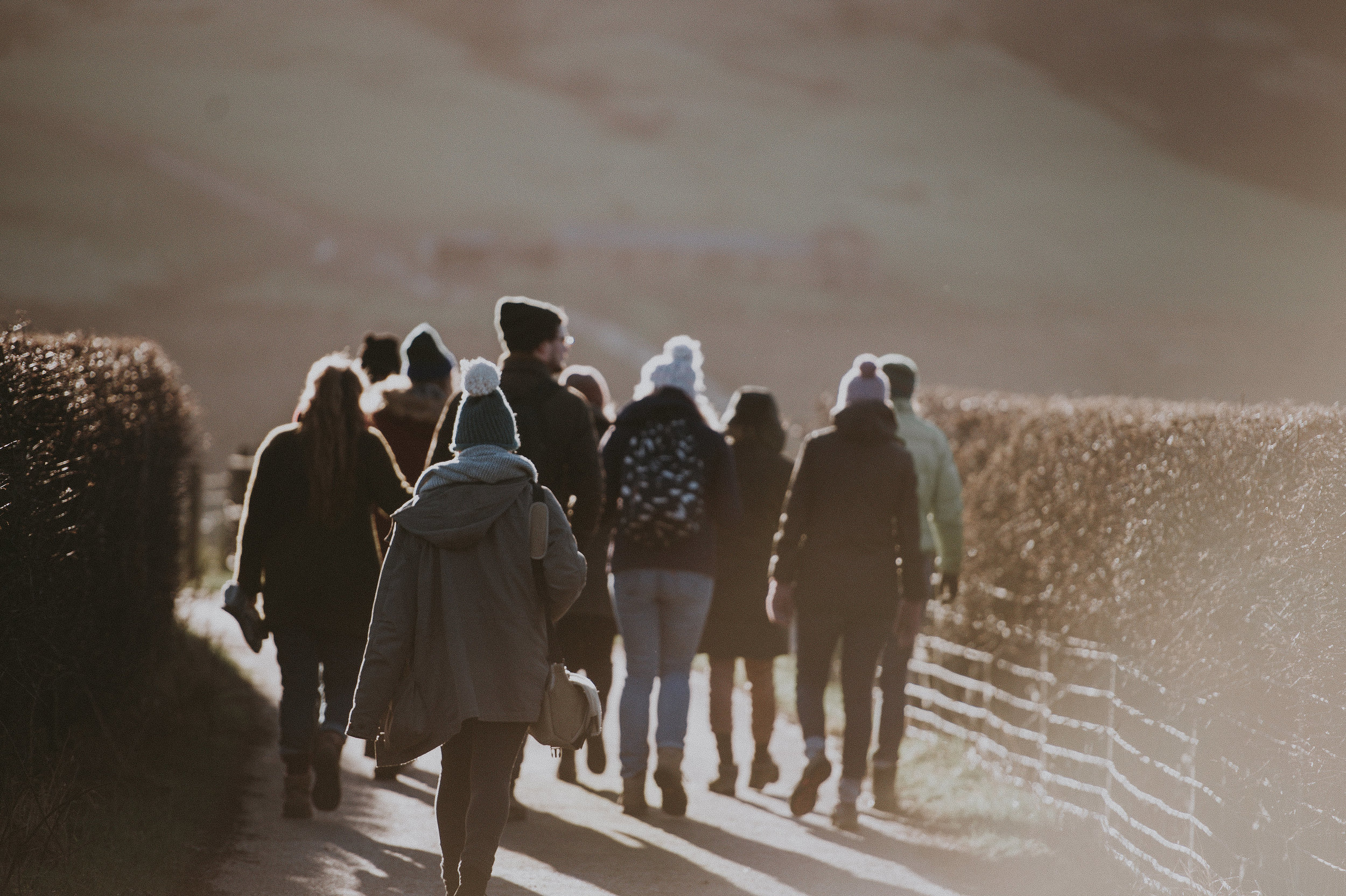Growing up in a rural setting by the coast, I was dubious about moving to the city. Although I adored the pastoral landscape, I was curious about the change and knew I had a chance of finding work there. Admittedly Bath isn’t London, but sooner or later it became easy to adapt to the urbanised habits of a city-dweller, though I have never lost my desire for the outdoors. Any chance I get to ramble in the country, or drive towards the coast, I grasp firmly with both hands. But am I happy in the city? The truthful answer is both yes and no.
Having found myself working tirelessly between two jobs and juggling a master's degree, I relish the idea of going back to basics living more than ever before. Despite my childhood desires I had never been camping before, so my partner and I packed his tent into the car and set off for Pembrokeshire.
Over a long weekend, we went without electronics, our camera proving the exception. Dinner consisted of a boil-in-a-bag meal, cooked over our camp stove and we ate outside under the stars. I couldn’t help but smile as we boiled water by the road-side, boots muddied by the mountain bog. Driving to get lost, scaling hillsides in the mist, the back-to-basics lifestyle had caught me by the hips and dragged me into my own reckless means of survival. I found a warm sense of comfort in hauling back to the simple things.
A key activity on our trip was to uncover the fabled resting place of King Arthur in the heart of the Preseli Mountains. Bedd Arthur is said to be found towards the end of The Golden Road, a historic tradepath across the backbone of the hills. Like all good road-trips it didn’t quite go according to plan, but then that was part and parcel of the beauty of the thing. We were quick to learn there were no signposts for the route and were hindered by a wide-spread mist. After several false starts, we managed to pick up the trail and clambered to top of Foel Eyer. From here we should have been treated to views across the Irish Sea and up the coast to Cardigan Bay, but instead we were rewarded only by undulating hills of verdant green, pinned down by threatening clouds. Whilst it was a little disappointing it was also rather magical, providing a mystical backdrop to my own Arthurian quest.
I’d hoped the trek would give guidance as to the direction we needed to take, which it did, but we were still far from Arthur’s burial site, and the weather was worsening. We were forced to put the journey on hold and head for the coast instead. We did, however, pick up the path from the end of the route the next morning, when the skies were clearing and I was adamant that I would find the long-awaited spot I was after. We launched into formidable bogland, seeing no other way to approach the summit. For many this would be a nightmare, but while it wasn’t ideal, wandering across the marshes, clambering over jagged rocks, I worried very little about anything other than potential tick bites. I was happy existing amongst the grassland scrub, tested by the elements.
Throughout my weekend escape, I embraced both the difficulties and achievements gained from overcoming them. Daring to grace the cliff-edge in St. David’s, provoking fear and excitement in equal measure. Meanwhile, the loss of a morning in bad weather meant reaching Bedd Arthur the following day felt all the more rewarding. Existing without modern distraction was liberating and bestowed a sense of calm. In honesty there was almost a void of feeling when I decided to live by the moment; it was as if all routine and expectation had been stripped away and left a sense of stillness in its wake.
Simply existing in nature, not watching the clock, was the most humbling feeling. I felt free to roam the grassland plains, graze my hands on the bluestone. My brain drew inspiration at passing ships around tiny islands as I scurried along in trepidation. Veins pumping, my heart beating fast, only the cry of a seagull could pierce the once silent void. The ground released aromas, dried grass and fragrant coastal flower. It is hard to put into words the way nature made me feel outrageously alive.
Despite my recharging weekend in nature, I can’t say wholeheartedly that I am a full-blown country girl. There is a sense of vitality in the cosmopolitan city, but it can be a feeling that dries after time and I think I will always require the boost that rural living offers. In the same manner, I don’t believe I will live in the city forever either. I often dream of a coastal cottage hideaway, but while I’m young and willing to chase my ideal career, I may reside elsewhere. Mother Nature is remarkable and as long as I’m in love with her. It doesn’t matter where I live, so long as I hark back to her when and where I can.





















